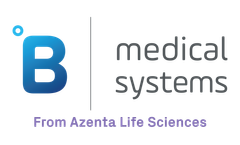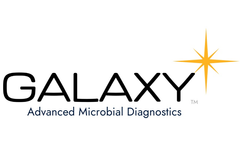Hiv Aids Articles & Analysis
25 articles found
These examinations help further understand the implications of thymic dysfunction in diseases such as HIV/AIDS, where T-cell depletion is a major concern. For optimal results, it is essential to follow standardized protocols for the preparation and staining of FFPE blocks. ...
This included infants, children under 5 years of age, pregnant women, patients with HIV/AIDS, etc. Moreover, over the two peak years of the pandemic, COVID-related disruptions have caused 13 million more malaria cases and 63 000 more deaths. ...
Study Data: Specific Effects on Cardiovascular Outcomes This study was carried out based on two medical databases in the United States, covering the data of patients with type 2 diabetes treated with SGLT-2 inhibitors (9334 people) and metformin (819973 people) as first-line treatment between April 2013 and March 2020. These patients did not have HIV/AIDS, ...
However, individuals with weakened immune systems, such as those undergoing chemotherapy or with HIV/AIDS, should avoid probiotics. Additionally, some people may experience mild side effects such as gas, bloating, or diarrhea, especially when consuming high doses of probiotics. ...
The cannabis plant has been used for medicinal uses in many different cultures for thousands of years, dating back to the ancient times when physicians in many parts of the world mixed cannabis into medicines to treat pain and other ailments.The main uses for medical marijuana include the reduction of nausea and vomiting during chemotherapy, improving appetite in people with HIV ...
Bartonella henselae were more recently discovered in 1990 as the key agent causing cat scratch disease, skin lesions, and heart and liver complications in HIV/AIDS patients. These highly fastidious, slow-growing opportunistic pathogens have coevolved with humans and animals over the course of history. ...
Bubonic plague, HIV/AIDS and COVID-19 are all examples of pandemics, however, the first is caused by bacteria and the other two are caused by viruses. ...
In recent years, due to the continuous increase of HIV/AIDS infection rate in the population, patients with strongyloidiasis are also common, and the clinical symptoms of these severely infected patients with low immunity are complex, and misdiagnosis cases often occur. ...
” By now, they were aided in their pursuit by Dipak Raj, an assistant professor of pathology at Brown, who had come up with a similar idea based on his studies of malaria in India. ...
Sepsis can arise from any infection although some people are more vulnerable, including people with HIV/AIDS, elderly people, neonates and those with autoimmune diseases. ...
Also at risk are those who have a compromised immune system; such as people with HIV/Aids infection, organ transplant patients or chemotherapy patients. ...
These were the chosen countries to introduce a state of the art incinerators to help tackle the Measles and HIV outbreak that plagues millions of people. Client Overview The MRC’s focal point is medical science that will provide life changing improvement to the health systems in both the UK and in Africa. ...
When we think of major health threats to people in Africa we often recall HIV/ Aids, Malaria or other preventable diseases such as Polio or Measles, yet there is a threat present in almost every home which takes more life than these well know conditions, almost no one outside Africa is aware of it and It lives in the heart of every ...
This article focuses on TRIPS' patent provisions and the effect its restrictiveness has on developing countries as they struggle with populations with HIV/AIDS. An analysis of these issues show that TRIPS provisions placed on countries as they transition into the WTO, like length of patent rights and strict copyright laws, prevent them from: obtaining generic ...
These countries also have some of the world’s highest HIV prevalences. South Africa, with 5.6 million people infected (11 percent of the total population), has more people living with HIV than any other country in the world. ...
Numerous chronic illnesses and epidemics such as HIV/AIDS and tuberculosis require elaborate drug regimens for efficacious therapeutic outcomes. ...
Business insight HIV/AIDS is a global epidemic but is most acute in some of the poorest regions on earth. ...
In low-income countries, 18 percent of deaths are caused by infectious or parasitic diseases, such as HIV/AIDS, tuberculosis, and diarrheal diseases. Such diseases cause only 2.5 percent of deaths in high-income countries. ...
Southern Africa is largely subtropical and experiences erratic rainfall, poverty, and high burden of disease (especially HIV/AIDS and tuberculosis). The geography, climate and socioeconomic factors in Southern Africa make the region conducive to the growth of aflatoxigenic fungi. ...
Clinical efficacy, tolerability and safety of various doses of Iodine-Lithium-α-Dextrin (ILαD) monotherapy have been evaluated in 56 HIV-infected patients enrolled in double blind uncontrolled randomised study during 48 weeks follow-up period. ILαD was administered intravenously three times over five days with intervals of 23 weeks between treatments for a total of 12 infusions ...















